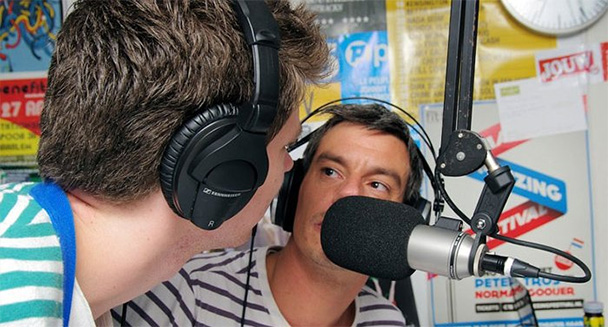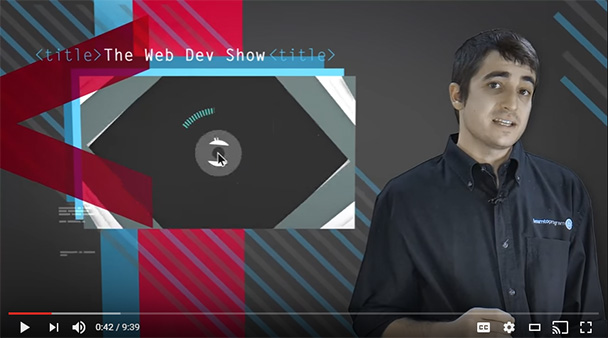Looking to add some engaging elements to your eLearning content? Go watch some television.
Much has been written about shifting viewing habits as people become less bound by scheduled programs and more content is available on-demand. While the amount of time people (Americans especially) spend in front of the screen has been widely panned, one thing is for sure: The amount of time we’re spending in front of screens is growing.
However, it’s not narratives alone that have us hooked.
Since the beginning, broadcasters have been coming up with techniques to engage us, stimulate us, and keep us focused on the tube. Many of these techniques can be easily adapted for eLearning, and when used correctly, further engage consumers of learning content.
Let’s take a look at a few.
Have a narrative strategy
Television has been using different and creative narrative strategies for decades. Narrative strategies are, essentially, storytelling techniques that can be modified to tell the story from a different perspective. By using a narrative strategy, you can unify your learning content and keep viewers engaged.
Here are a few narrative techniques that easily lend themselves to eLearning. You can introduce these elements to just about any creative eLearning presentation.
- Backstory: The story that happens before the story; the past life of characters, history, or the setting that lends a context for what is to come. Example: St. Eligius was an always-underfunded, understaffed, often-forgotten hospital in one of Boston’s poorest neighborhoods. It maintained this reputation for decades.
- Cliffhanger: The narrative ends unresolved. Example: Who shot JR?
- Audience surrogate: A character who expresses the questions, confusion, and experience of the audience. The audience can better relate to the narrative through the surrogate. I use this technique in a program we produce called Code Cafe. The main character in the program is not the coding expert, but the person who is learning to code in a coffee shop. Viewers of this program relate to learning to code through this surrogate.
- First-person narration: The story is presented from the point of view of a character—most often the protagonist. Example: An adult Kevin Arnold narrates The Wonder Years.
- Spoof: Narrative is presented in the style of humorous imitation. Example: The movie Airplane! spoofs 1970s disaster films.
Front sell and back sell
In the interest of 100 percent accuracy, this one is more from radio than television, but the technique is used in both media (Figure 1). The idea is to promote what is coming up in the next few minutes or something interesting that has happened in the past. Since you’re not playing REO Speedwagon records, you’re going to want to promote (or “sell”) parts of your content coming up that are particularly compelling.

Figure 1: Good ideas come from radio, too
A front sell can be as simple as: “In our next module we’ll be looking at seven things successful leaders do before breakfast to impact others,” or: “In just about six minutes you’ll actually be creating your very own database, so watch carefully.”
A front sell can add just a little drama and intrigue as well as giving viewers a chance to anticipate good things to come.
In radio, they’ve been using front sells since the beginning. You can front sell within your eLearning, and avoid any references to ’80s power ballads.
Front sells and back sells have the additional benefit of previewing and reinforcing material, which can help with setting appropriate expectations and with retention.
Professional host
Pat Sajak and Vanna White are almost universally liked. For decades, they’ve smoothly moved contests from initial puzzle to final spin to the bonus round of Wheel of Fortune. But you don’t need a multimillion-dollar hosting team to succeed in your learning content. Hosting duties in learning can include providing background information, interviewing subject matter experts, and even helping viewers evaluate what they’ve learned.
The host does not need to be a subject matter expert. A strong host will be very comfortable on camera, be able to interact with subject matter experts, and, most importantly, be able to forge a connection with viewers.
We’ve used everyone from our office manager to Miss USA (really!) to host learning content that we’ve developed, giving our content a more television-like feel. (Figure 2—not us, by the way.)

Figure 2: An affable and engaging host can help put subject matter experts at ease and present material on camera effectively
Motion graphics
Watch the average newscast today and the background is almost always in motion. Bright colors stimulate viewers, and elements like lower thirds and text crawls add elements of energy to the presentation. These same techniques can be used in eLearning content. In most eLearning content that I have seen, videos place an interview subject against a boring wall or a stark white background. Compare that with a TV newscast, and the contrast is telling. (See Figure 3.)

Figure 3: In LearnToProgram’s Web Dev Show, on-camera host Andrew Snyder-Spak introduces a segment accompanied by several layers of motion graphics
If you don’t have the in-house capabilities to create motion graphic assets for your learning content, there are a number of marketplaces that feature creative professionals who can do this for you economically.
Be episodic
Instead of releasing “courses” and “chapters,” release episodes. An episodic approach lends itself to a better narrative strategy, as you have “stories” that are wrapped up in each episode and some larger theme arcs that inform every episode in your content. We often release content in “seasons” and drip it to learners a week at a time. We find that they often look forward to new content, and knowing it will be released on our website each Thursday, for example, turns the release into an event instead of an obligation to watch.
The fact is that we have a lot to learn from watching television. People will voluntarily (and eagerly) watch television programming, while avoiding learning content. Perhaps, in borrowing a few techniques from the broadcast realm, we can better engage learners in our own learning narratives.
Thanks for reading. Have to run. Friends is on.


